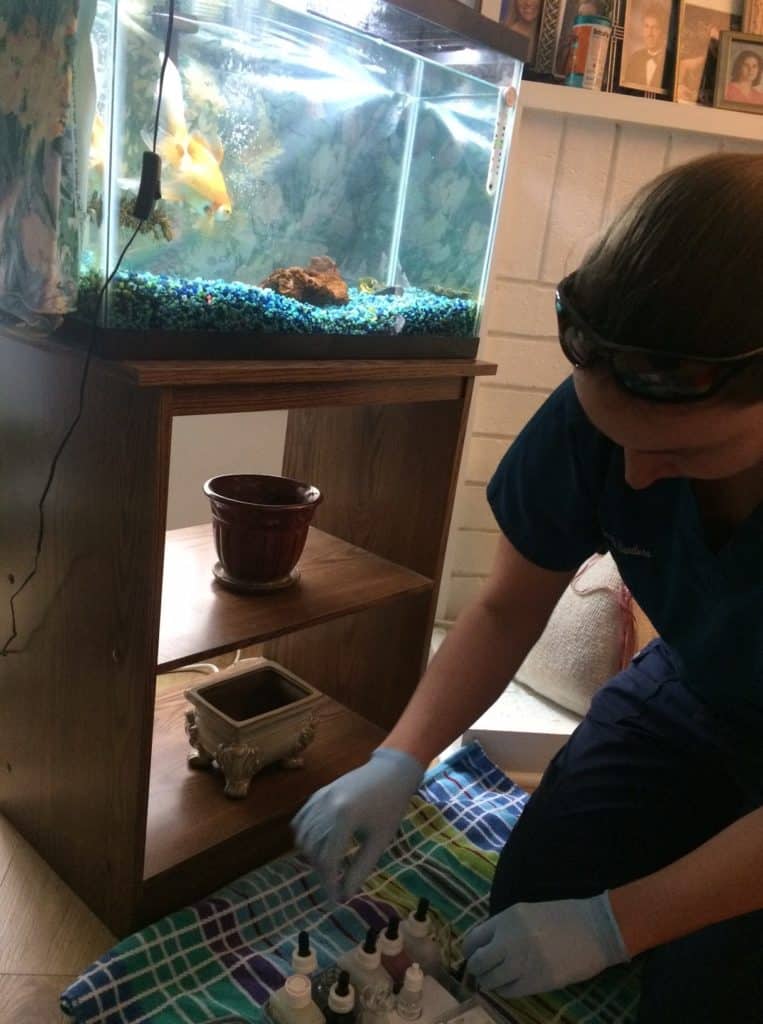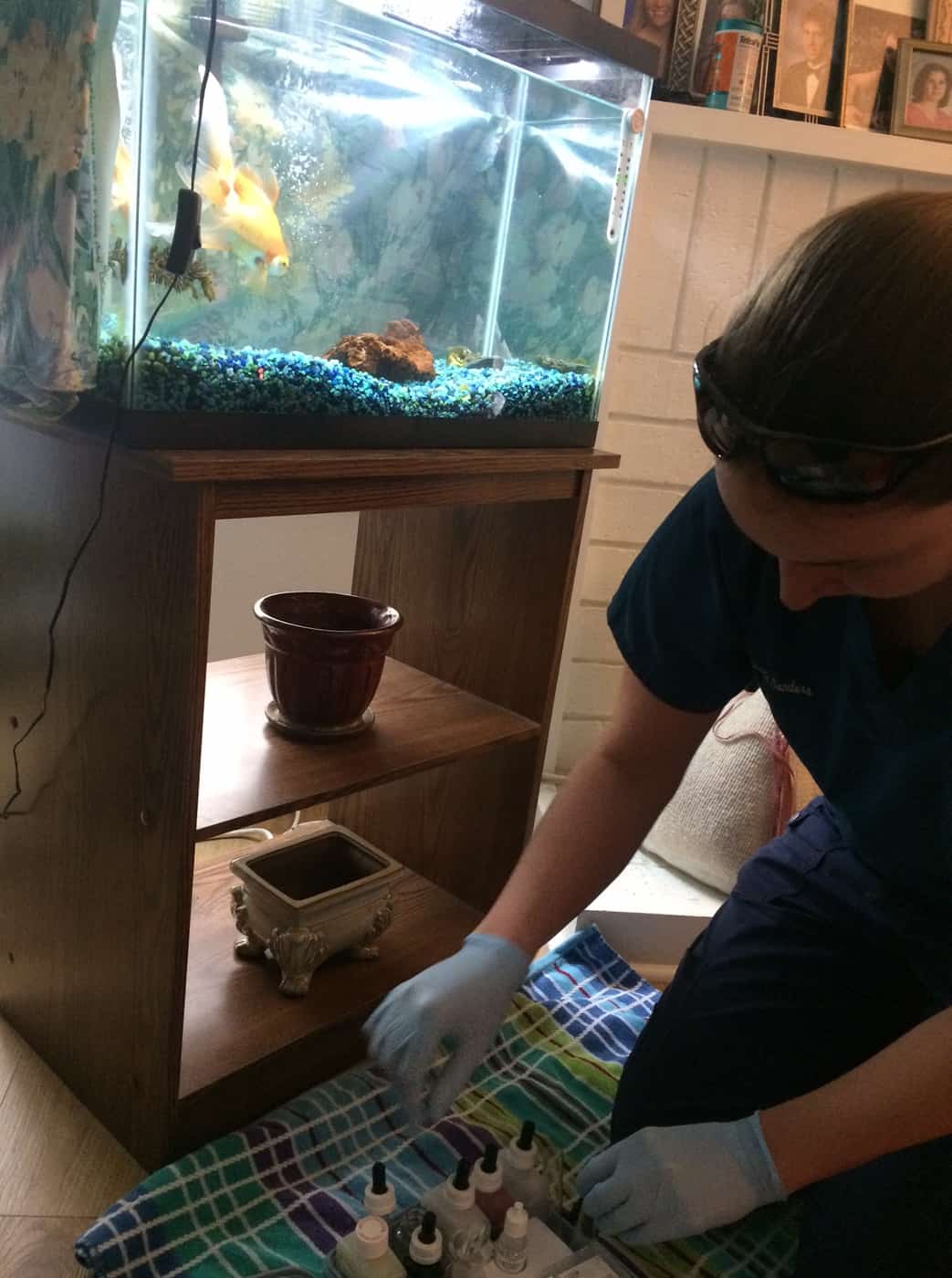Most fish kept as pets are maintained in artificial systems; tanks and ponds meant to replicate their “wild” environment, and require regular water changes to keep their environment healthy. In a “wild” environment, water flushes into and out of a system through streams, rivers, brooks, rain or the ocean. In an artificial tank or pond, water will come in and out at the owner’s discretion, commonly called a water change. There are many ways to improve your system by getting it very close to a “wild” system, but it’ll never be the same. Let’s get started with some of the various claims our office has heard over the years.
Excuses to not doing water changes
“I never do water changes and all my fish are fine. The out break of (fill in your chosen disease here) has nothing to do with the water.”
In most of these systems, commonly referred to as “natural” systems, a lot of plant debris and sludge can usually be observed. All the nitrates produced by the fish waste is going into the plant growth. This is a fine way to manage your nitrates. But what about the fishes’ other wastes? How do you remove the hormones they produce? What exactly is living in the sludge from months or years of fish and plant waste? In a “wild” system, hormones and other metabolic wastes are diluted out with the influx and efflux of new water, so why aren’t you doing water changes? Yes, I know water is expensive, especially where we are in California, but you can manage a system very simply with small water changes. Water removed from fish systems should always be used to water plants. Fish health is tied directly to the water chemistry. If you’ve “never had a problem before,” I guarantee everything was building up until a tipping point was reached.
“I remove the fish from the tank and do a big water change every ___ months.”
When you take water from your hose and add it to a fishes’ environment, the metabolic activity of the fish changes the water chemistry over time. By the time you get to your water change, the chemistry in the tank could be significantly different than what you originally added from the tap. When you dump that fish from his tiny bowl into a freshly filled tank, the shock of the differing water parameters can stress them out and potentially kill them. I understand that sometimes, tanks and ponds get beyond your weekly/monthly maintenance and the only way to get in and get the job done properly is to remove the fish. In order to keep your fish from stressing out either from handling, confinement in a tiny tub during maintenance or water shock, keep them in the tank while you work and never remove more than 50% of the water at one time. As long as you aren’t chasing them with the vacuum or siphon, they won’t mind a bit. And yes, you do need to use a gravel siphon.
“It can’t be my filter, because I replace my filter media every month.”
Sorry consumers, but this is only to get you to buy more filter media. By removing your filter pads every month, you essentially set your nitrogen cycle back at zero. I know those flossy pads with carbon pellets tend to fall apart that fast, but switching to a firmer sponge, that could last for several years, will be the best investment you ever make. Your fish will be so much happier not having to go through the ammonia, nitrite and nitrate spikes every month.
If you have any questions about water changes or water quality, please contact our office or comment below.



My Aquatop FZ13 comes with course and fine sponges to use in the canister. When you suggest using a firmer sponge in your article, does that mean I can use the course (blue) sponges exclusively? And skip the flimsy fine (white) sponges? Perhaps “course” doesn’t mean firm, so I wanted to ask. The course sponges certainly last a lot longer.
Pingback: The Nitrogen Cycle – Aquatic Veterinary Services
hey if i buy those filter sheet linked, do i just use that in the filter i have. And i only change that once a year? just confused because it comes with 50. thank you 😀
You never need to change it at all! The sponge filter is for a 50-gallon filter and just a general recommendation for a good overall size for many filter types. It is not a package of 50 sponges.